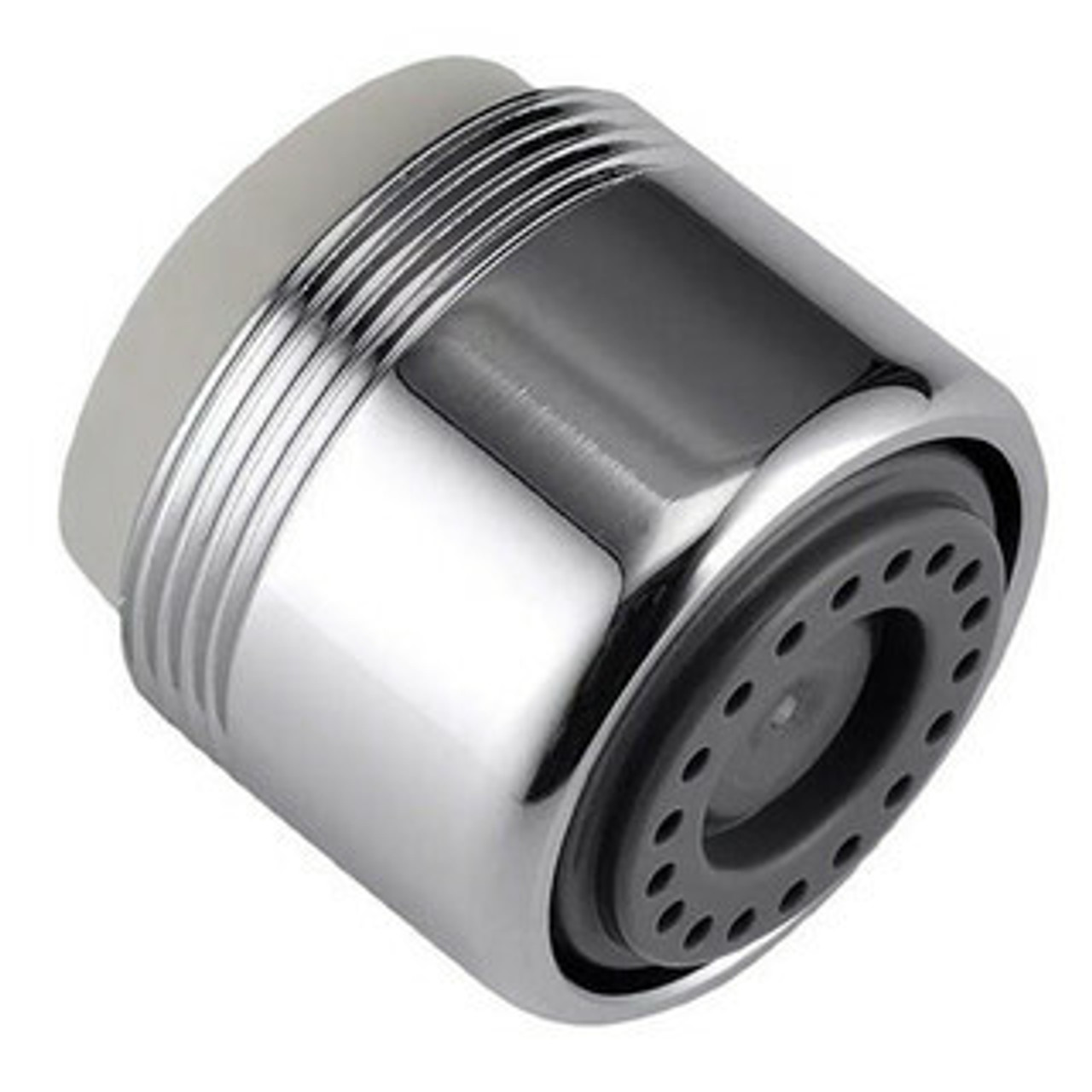-

Neoperl PCA Spray Regular Insert 0.35 GPM 1363514 - Case of 50 Minimum
Neoperl
Our Item #: 17384
- MFG #:
$1.09 -

Conserve Smart SmartStream™ 1.5 GPM Dual Thread Bubble Aerator Pressure Compensating CMA150B -Case of 100 Minimum
Conserve Smart
Our Item #: 10100s
- MFG #:
$1.15 -

Neoperl Regular Female 1.5 gpm PCA Perlator - laminar stream 1131004 - Case of 50 Minimum
Neoperl
Our Item #: 17505
- MFG #:
$2.27 -
 $2.69
$2.69 -

Neoperl Careguard 1.5gpm Dual Thread, Laminar stream, Chrome Plated 1202004 - Case of 50 Minimum
Neoperl
Our Item #: 16585
- MFG #:
$3.05 -
 $3.05
$3.05 -

Neoperl 1.5 GPM PCA Cascade Dual Thread Vandal Proof Bubble Aerator 1112606 - Case of 40 Minimum
Neoperl
Our Item #: 17357
- MFG #:
$4.41 -

Niagara 1.5 GPM Dual-Thread Brass Swivel Kitchen Aerator N3126P-C - Pack of 10 Minimum
Niagara Conservation
Our Item #: 11555s
- MFG #:
$11.99
More About Low Flow Faucet Aerators and How They Save Money
Low flow faucet aerators are one of the simplest ways to cut down on water use without giving up comfort or pressure. These small attachments mix air into the water stream, reducing the flow rate while still providing a steady, even spray. They’re available in different flow levels, measured in gallons per minute (GPM), so you can pick the right one for your sink or faucet type. Many models are certified by the EPA’s WaterSense program, meaning they meet strict efficiency and performance standards. Whether you’re upgrading a home bathroom or outfitting a commercial facility, low flow aerators help lower water bills, reduce waste, and support sustainable water use.
Shop by Flow Rate (GPM)
Choosing the right flow rate is key to finding the perfect balance between comfort and conservation. Faucet aerators are measured in gallons per minute (GPM), which tells you how much water flows through per minute. A 0.5 GPM aerator is ideal for handwashing sinks in public restrooms, giving strong water savings without affecting usability. 1.0 GPM models are great for residential bathrooms, while 1.5 GPM aerators work well in kitchens where a little more flow is helpful for rinsing dishes. By matching your aerator’s GPM to your faucet’s purpose, you can reduce water use and maintain performance at the same time.
Aerator Types and Thread Sizes
Faucet aerators come in a few different thread styles, and choosing the right one ensures a proper fit. Male thread aerators screw into faucets with internal threads, while female thread aerators fit faucets with external threads. If you’re unsure which you have, dual-thread aerators can fit both types and are a safe option for most standard faucets.
Some modern faucets use cache or hidden aerators, which sit recessed inside the spout for a cleaner look. These often require a special key for removal or installation. Knowing your thread size and type makes it easier to find a compatible aerator and helps avoid leaks or cross-threading during setup.
WaterSense Certified Aerators
If you’re looking for proven water savings, go for WaterSense certified aerators (like this one from Neoperl). These models are independently tested to meet EPA standards for performance and efficiency. The certification means you’ll save water without losing pressure or comfort, which can add up to noticeable savings on utility bills.
Many local water districts and municipalities even offer rebates for WaterSense products, making the upgrade even more cost-effective. Choosing a WaterSense-certified aerator is an easy way to meet sustainability goals and support environmentally responsible plumbing practices.
Benefits of Low Flow Aerators
Installing a low flow aerator offers plenty of everyday advantages beyond just saving water. They help reduce household water use, which lowers both your water and energy bills since less hot water is needed. They’re also environmentally friendly, cutting down on waste and supporting sustainable water management. Despite the lower flow rate, modern aerators maintain strong water pressure and a steady stream, so you won’t notice much difference in performance. It’s a small upgrade that makes a big impact, both for your home and the planet.
Frequently Asked Questions About Low Flow Faucet Aerators
A low flow aerator limits the amount of water that passes through the faucet, usually to 1.5 gallons per minute or less. It mixes air with the water stream to maintain strong pressure while using less water overall.
Not really. These aerators are designed to add air into the stream, keeping the pressure consistent. You’ll still get a steady, full flow, just with less water used.
Yes. They’re one of the most cost-effective upgrades for reducing household water and energy use. Most homeowners see lower utility bills with no noticeable drop in performance.
Check if your faucet has internal or external threads. Male-thread aerators fit inside-threaded faucets, while female-thread aerators fit outside-threaded ones. Dual-thread options can work with both.
WaterSense aerators are independently tested by the EPA to ensure both water efficiency and performance. They often qualify for rebates and meet higher environmental standards.
Yes. Most aerators simply twist on or off by hand. Cache or hidden aerators may need a small removal tool, but installation is quick and easy for most models.

